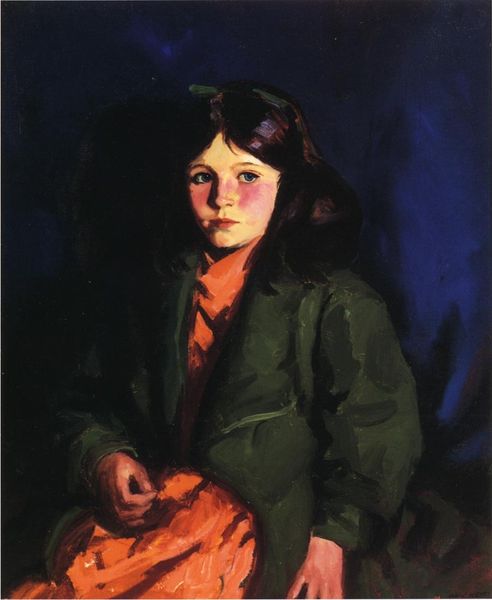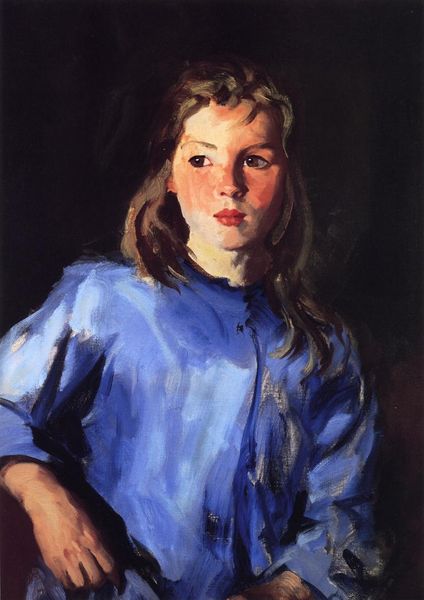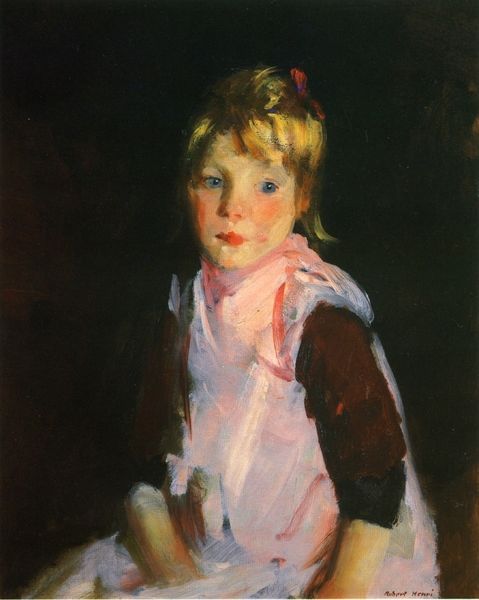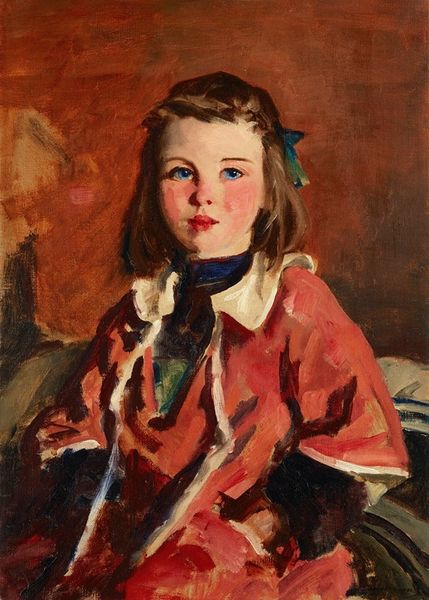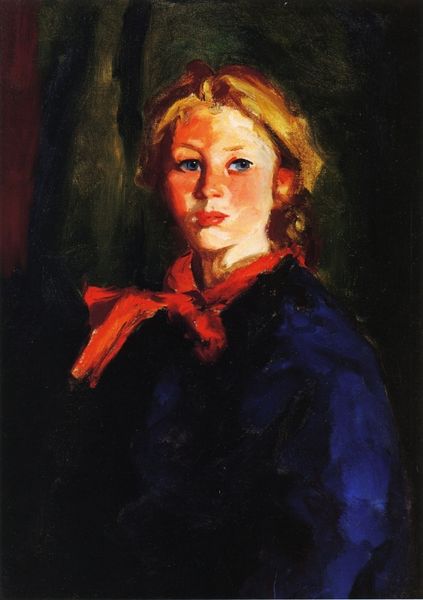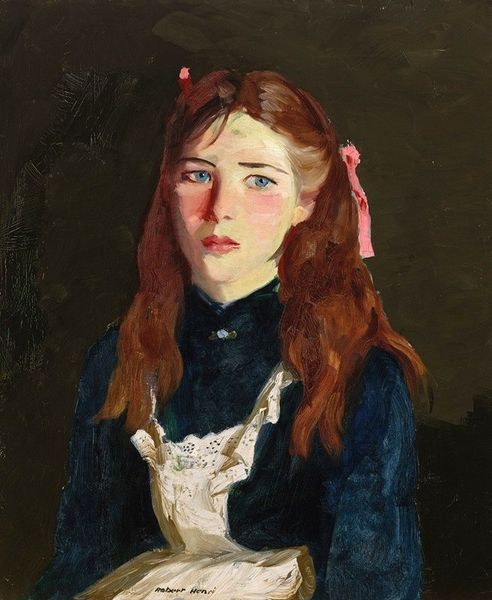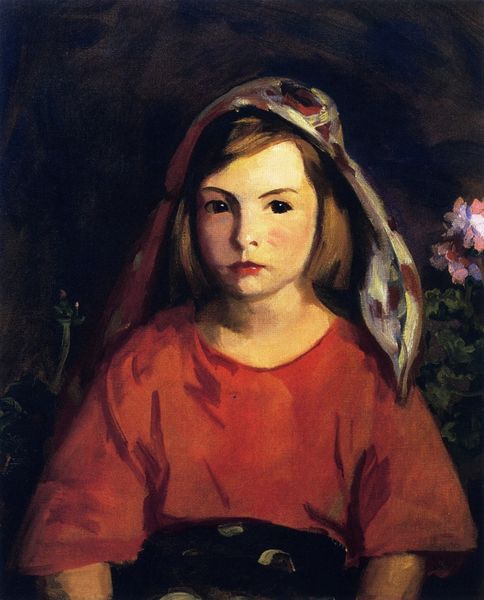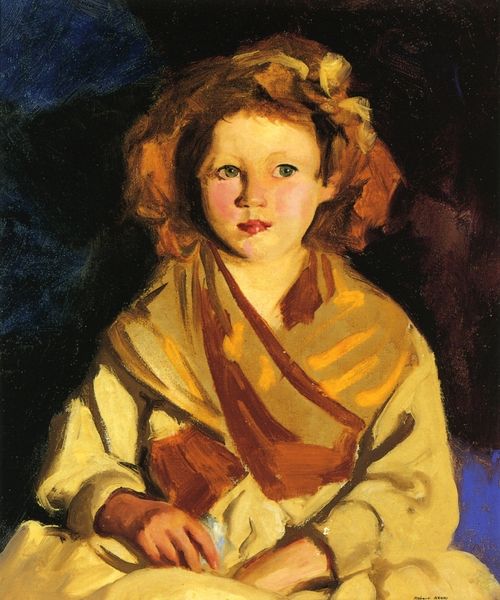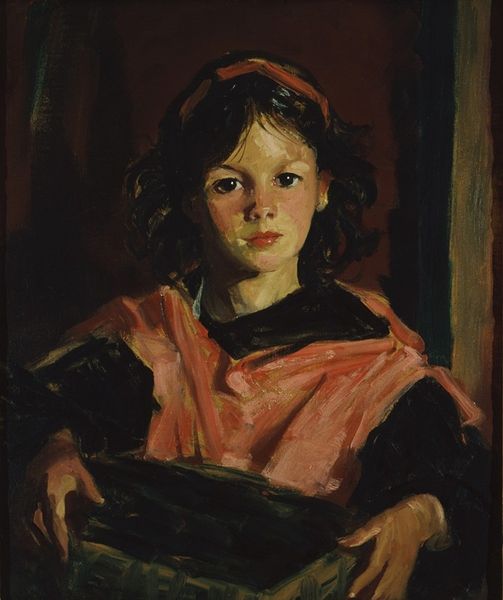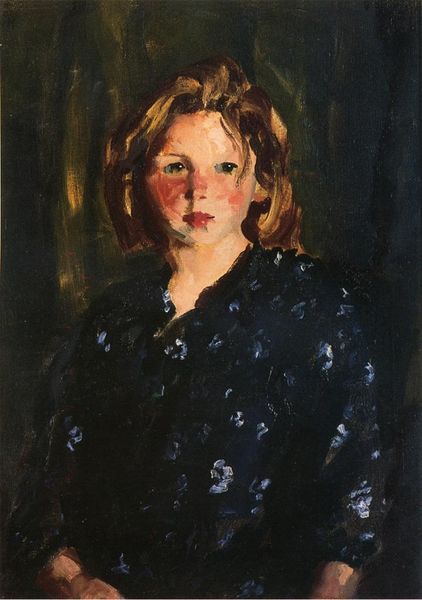
painting, oil-paint, impasto
#
portrait
#
painting
#
oil-paint
#
figuration
#
impasto
#
ashcan-school
#
academic-art
#
modernism
#
realism
Copyright: Public domain
Curator: Looking at "Nora," painted by Robert Henri in 1913, a striking oil on canvas, I’m immediately struck by the somber tonality. Editor: It’s quite beautiful, in a very classic way. I notice, though, that while seemingly a straightforward portrait, the almost oppressive dark backdrop seems to intentionally destabilize her presence. Curator: That’s interesting. Henri was, of course, a leading figure in the Ashcan School, a movement rooted in portraying everyday life and rejecting the prevailing academic aesthetic. He was very much trying to depict modern life. Editor: Indeed. And the title, "Nora," depersonalizes her in a way, doesn't it? Making her almost emblematic, perhaps an archetype. Combined with that bold red garment and that delicate hair ribbon, a complex message emerges about female identity in this rapidly modernizing America. The sharp contrasts accentuate a kind of vulnerable defiance. Curator: Exactly. His focus wasn’t necessarily about capturing likeness, but rather conveying a sense of immediacy and emotion. There's a painterly quality that defies academic standards; yet the portrait's composition and subject nod respectfully to convention. The slight blush in her cheeks creates a remarkable intimacy. How might the rise of department stores and a focus on "feminine virtue" be playing a role? Editor: Precisely, and the work also hints at the tension between objectification and individuality. A working-class girl presented through a bourgeois artistic lens, perhaps. Even her direct gaze seems to ask the viewer to reconcile with this inherent power dynamic. Curator: It also speaks volumes about the societal constraints placed upon young women during the early 20th century, those silent expectations. It also offers a beautiful, quiet moment to reflect upon these intersectional complexities and power struggles of that time. Editor: Yes. Ultimately, a deceptively simple portrait brimming with implications. Curator: Absolutely. This piece invites us to reflect on representation, agency, and the often-unspoken narratives within portraits themselves.
Comments
No comments
Be the first to comment and join the conversation on the ultimate creative platform.
